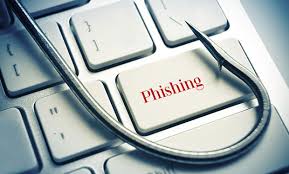 Here’s a provocative statement: If you could just prevent your staff for clicking on links or opening attachments in phishing emails, 95% of your cybersecurity problems would be prevented.
Here’s a provocative statement: If you could just prevent your staff for clicking on links or opening attachments in phishing emails, 95% of your cybersecurity problems would be prevented.
As perimeter defenses and anti-malware software products have become more effective, cyber-attackers have turned to the phishing email approach as their number one favorite method for acquiring user names and passwords or gaining unauthorized access to computers on your network. The spearphishing variation is when the attacker has done enough reconnaissance on your company to send an email to the one person they know would be the most helpful. Here are some recent examples, as reported on CSO.com:
- Sony Hackers Used Phishing Emails To Breach Company Networks
- New Spear Phishing Campaign Pretends to be EFF
- Investigators Suspect Anthem Breach Began with ‘Phishing’ of Employees
- Email Attack on Vendor Set Up Breach At Target
- Phishing scam breach compromises data of 39K (in a large Texas hospital network)
Phishing emails play on people’s willingness to trust. Some common types include:
- Email from the boss. This is usually a request appearing to come from someone far up the food chain, and usually is a request for a large wire transfer. Take time to verify these requests with a phone call. This is usually a spearphishing email sent to the bookkeeper, accountant or CFO.
- Your account is broken. Email will appear to come from a company you do business with, complete with a link to a look-alike login page. Usually designed to steal login credentials or credit card information, or both.
- Let’s make a deal. The advanced fee fraud or “Nigerian” email promises untold riches if only you will send some good faith money or provide you bank routing and account number for the huge deposit. Either way your money will disappear.
- So precious. In this case you are sent something enticing, like a free GoPro or iPhone, a cute cat video, or a game, or a gift certificate.
- Your shipment is damaged. Designed to look like they came from UPS, FedEx, USPS, or other shipping services, there is a sad story about your shipment, and an attachment to open or a link to click.
Clicking on the links or opening attachments usually will install a remote access Trojan horse malware program that will allow the attacker to log into your computer from across the Internet. That sort of access gives them the ability to bypass your firewall. The malware usually includes a module that disables your anti-malware software too.
On Monday, we will take a look at the best way to stop all forms of social engineering attacks from working in your organization – cybersecurity awareness training.
More information:
Share
FEB




About the Author:
I am a cybersecurity and IT instructor, cybersecurity analyst, pen-tester, trainer, and speaker. I am an owner of the WyzCo Group Inc. In addition to consulting on security products and services, I also conduct security audits, compliance audits, vulnerability assessments and penetration tests. I also teach Cybersecurity Awareness Training classes. I work as an information technology and cybersecurity instructor for several training and certification organizations. I have worked in corporate, military, government, and workforce development training environments I am a frequent speaker at professional conferences such as the Minnesota Bloggers Conference, Secure360 Security Conference in 2016, 2017, 2018, 2019, the (ISC)2 World Congress 2016, and the ISSA International Conference 2017, and many local community organizations, including Chambers of Commerce, SCORE, and several school districts. I have been blogging on cybersecurity since 2006 at http://wyzguyscybersecurity.com